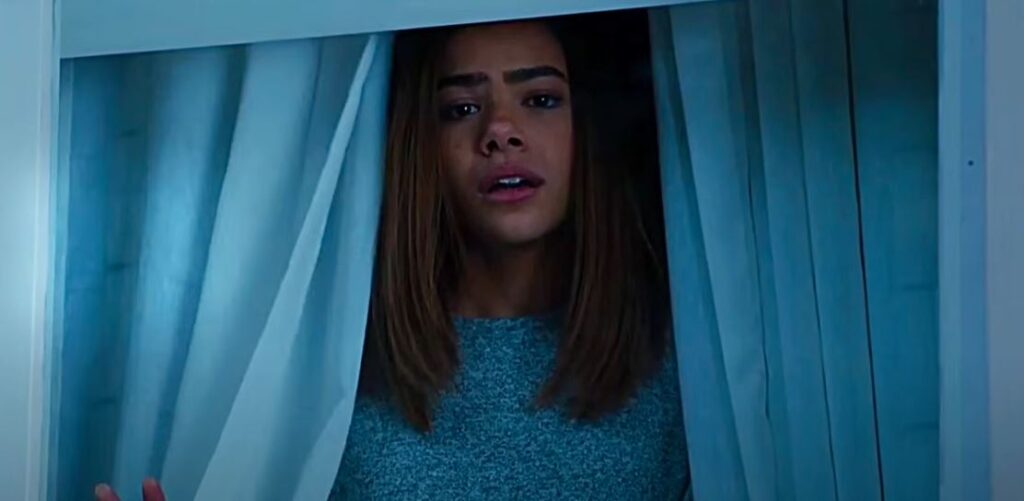One of the most moving storylines in Ginny & Georgia is the emotional breakdown of Ginny and Marcus’s relationship. Episode 8 of Season 2 shows their breakup, which is by no means an abrupt act of adolescent rebellion. It has its roots in a harsh psychological environment, which is indicative of a larger cultural change in the way that youth deal with emotional responsibility and mental health issues. The scene purposefully causes viewers to feel uneasy by forcing them to confront realities that are rarely discussed so openly on popular television.
Marcus experiences a slow but noticeable psychological decline after beginning as the stereotypical brooding neighbor with a hidden heart. A depressive episode that subtly gets worse over time is rooted in grief over the earlier death of his childhood best friend. The series, which employs subtle acting and unsaid tension to depict Marcus’s internal turmoil, is remarkably successful in portraying such a gradual decline. His relationship with Ginny suffers as a result of his overwhelming self-belief that he is not deserving of love, not because he lacks it.
| Character | Portrayed By | Role | Key Issues | Series | Streaming Platform |
|---|---|---|---|---|---|
| Ginny Miller | Antonia Gentry | Teen daughter of Georgia, main protagonist | Struggles with mental health, self-harm | Ginny & Georgia | Netflix |
| Marcus Baker | Felix Mallard | Ginny’s love interest, Georgia’s neighbor | Depression, emotional withdrawal | Ginny & Georgia | Netflix |
Marcus admits, “I don’t have room for anyone else’s pain right now,” during the breakup. The line is haunting in its delivery and remarkably clear in its intent. It captures a developing trend in television narrative: a shift from melodrama to mental realism. His declaration isn’t cruel; rather, it’s an act of emotional candor that many fans have discovered to be remarkably similar to relationships impacted by depression in real life. Significantly better scripting choices, like this scene, lend the program a genuineness that really connects.
Layers of emotion emerge in Ginny’s response. She is initially heartbroken but eventually gains a deeper understanding of Marcus’s suffering. The way the show presents Ginny’s development as active emotional intelligence rather than passive acceptance is especially novel. In contrast to romanticized portrayals of “fixing” a partner, she models what many professionals refer to as a supportive rather than codependent dynamic by opting to stay in his life as a friend.
Incorporating therapy, both for Ginny and subtly for Marcus, turns into a narrative technique with social ramifications. Ginny begins going to therapy sessions and talks openly about self-harming early in the season. These depictions are not just for show; they are a part of a larger trend in youth-centered media toward responsible representations of mental health. Netflix makes sure that its scripts capture authentic psychological nuance by forming strategic alliances with groups like Mental Health America. Such input ensures that characters are more than just plot devices—they are reflections of real lives, and it is incredibly flexible in its use.
The breakup still has a lasting emotional impact by the start of Season 3. Ginny and Marcus are no longer formally a couple, but they still emotionally circle one another. For viewers accustomed to the messy, transitional phases of contemporary relationships, their scenes—which are often intimate but not romantic—offer a surprisingly inexpensive kind of emotional catharsis. In times of crisis, they reunite after cuddling, talking, and pulling apart. This emotional boomerang draws attention to a common trend among young adults, particularly during periods of uncertainty and shared trauma.
Hope is sparked when Marcus gives Ginny a drunken kiss at a school dance, only to later admit he doesn’t recall the incident. This emotional upheaval is a reflection of Ginny’s weariness as well as his instability. When Marcus tells her he no longer loves her, it is the most devastating blow. It soon becomes clear to viewers that this was a planned emotional retreat intended to keep Ginny from going into a downward spiral. He had assured Ginny’s mother, Georgia, that he would not be the burden burdening her daughter.
Consider Pete Davidson and Ariana Grande‘s turbulent relationship, which also ended due to personal issues and public scrutiny. Their dynamic is strikingly similar to real-life celebrity couples dealing with mental health issues. As with many well-publicized splits, timing, self-worth, and a keen awareness of what love shouldn’t require were the problems, not love.
Ginny & Georgia has significantly raised the bar for teen dramas with its well-considered character arcs and scripting. These are teenagers attempting to survive trauma while still developing their identities, not just lovers navigating prom and fame. In light of the current mental health crisis, particularly affecting teenagers, these depictions provide insight and possibly a path forward.
Ginny and Marcus are still struggling to strike a balance between friendship and romance as the season draws to a close. Their relationship is still unresolved, but even that is remarkably intentional. Particularly at that age, life is frequently unresolved. The show defies the neat narratives typical of TV finales by keeping them romantically apart but emotionally intertwined.
In addition to character growth, their breakup offers a commentary on society’s increasing recognition of emotional labor, self-preservation, and the bravery needed to let go rather than cling on. Many viewers are living this story, especially in a generation that is incredibly good at speaking up about things that earlier generations were taught to keep quiet.
Fans hold fast to the “endgame” theory, which holds that Ginny and Marcus are destined to be together, as Season 4 approaches. However, their story has already accomplished something significant even if they never have a romantic reconciliation. It has changed the dialogue by proving that television programs can effectively entertain viewers while teaching them about emotional intelligence, mental health, and the unadulterated complexity of adolescent love.

